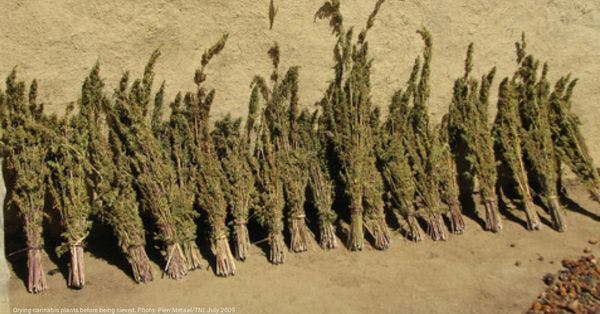Responses to COVID-19 impacts must include Moroccan cannabis farmers
By Marianne Coulavin, Student - MA Program 'Policies and Practices in International Organizations', Sciences Po Grenoble*
(Most of this information was compiled in interviews with Dania Putri and Asmae, a young woman of the community of cannabis farmers in the Al Hoceima province of the Moroccan Rif region.)
Morocco is the world’s largest producer of cannabis resin, also known as hashish. In the Rif, the country’s northernmost region, cannabis has grown for centuries. Its mountainous topography and comparatively humid climate suit the ancient crop.
Cannabis cultivation is done in the open. During August and September, if you wander around Ketama, a small rural commune in the region, you are likely to see countless fields of cannabis plants ready to be harvested.
The central Rif is one of the poorest regions of Morocco. Cannabis cultivation is a matter of subsistence. For many households, it serves as a main source of income in a region with few alternative livelihood opportunities and limited public services.
Although growing cannabis is illegal in Morocco, it remains tolerated in the Rif region. Nationally, cannabis cultivation provides a living for around 90,000 to 140,000 families, covering around 50,000 hectares of land.
In order to understand cannabis farming in the Rif, one needs to look at an often unacknowledged fact: gendered labour roles. Men are generally in charge of selling the production while women work in the fields. Community leaders are generally men and thus the faces of the cannabis industry in the region. But women are the harvesting hands of the hashish that reaches Europe.
Farming cannabis is incredibly exerting, explains Asmae, a young woman from the Al Hoceima province. A typical working day in the field lasts some 14 hours; from before dawn, at 05:00, to almost sunset, at 19:00. With a brief 30-minute lunch break to barely recover.
As it could be expected, the daily work of women labourers has been impacted by lockdown measures implemented by the Moroccan government in an attempt to contain the COVID-19 pandemic.
Usually, to speed up cultivation and harvest, farmers hire workers; often young people looking for employment. But these extra pairs of hands are rare these days, as most come from different provinces and are not allowed to travel during pandemic restrictions. Women are left with no choice but to work harder to ensure cultivation runs smoothly.
Besides worsening harvesting conditions, cannabis farming communities are seeing pre-existing challenges exacerbated by the epidemic. In the last couple of years, growers’ earnings have been significantly reduced as prices have plummeted. Trade restrictions have further aggravated the situation, limiting access to foreign markets. As a result, some farmers have begun to stockpile their harvest. Only domestic sales, which normally account for 20% of the total, have remained stable.
Moroccan cannabis growers are also facing a dilemma. The rise in popularity of high-THC strains imported from Europe (locally known as ‘critical’) has conditioned cultivating practices in recent years. But these supposedly high-yielding varieties are also more resource-intensive, demanding higher financial investments, labour, and water. Especially compared to locally-adapted landraces, such as Beldia. While a recent revival of the latter is promising, the ecological impact of foreign demand compounds environmental concerns, such as deforestation. And adds to the burden faced by precarious cannabis growing communities during the pandemic.
To mitigate the economic consequences of the pandemic, the Moroccan government has set up a support scheme ranging from 800 to 1,200 dirhams ($USD 82 - 124) per month depending on the size of the household. While support is welcome, this allowance will not suffice to alleviate the decades-long underdevelopment and marginalisation of the region.
Riffian cannabis growers would greatly benefit from robust investments in infrastructure and the nationwide legal regulation.
And those best placed to offer guidance on that process are traditional farming communities, and particularly women, with their centuries-old experience in cultivation, in deciding how best to advance to formal markets.
According to the Transnational Institute, a comprehensive plan for development in the Rif would include providing technical assistance to farmers, recognising the importance of cannabis to local communities, and exploring innovative and sustainable ways to improve other local sectors – such as tourism – to help diversify the local economy.
Despite the difficulties farmers face, cannabis production remains the most immediately viable and rapidly scalable livelihood in the Rif. As the COVID-19 pandemic is expected to have disastrous health and socio-economic consequences around the globe, the legal regulation of cannabis could support the Moroccan peoples’ resilience.
* This blog post was produced within the framework of a 4-month volunteering experience placement at the International Drug Policy Consortium as part of the student's MA Program 'Policies and Practices in International Organizations' at Sciences Po Grenoble.
Regions
Related Profiles
- International Drug Policy Consortium (IDPC)
- Transnational Institute (TNI)
